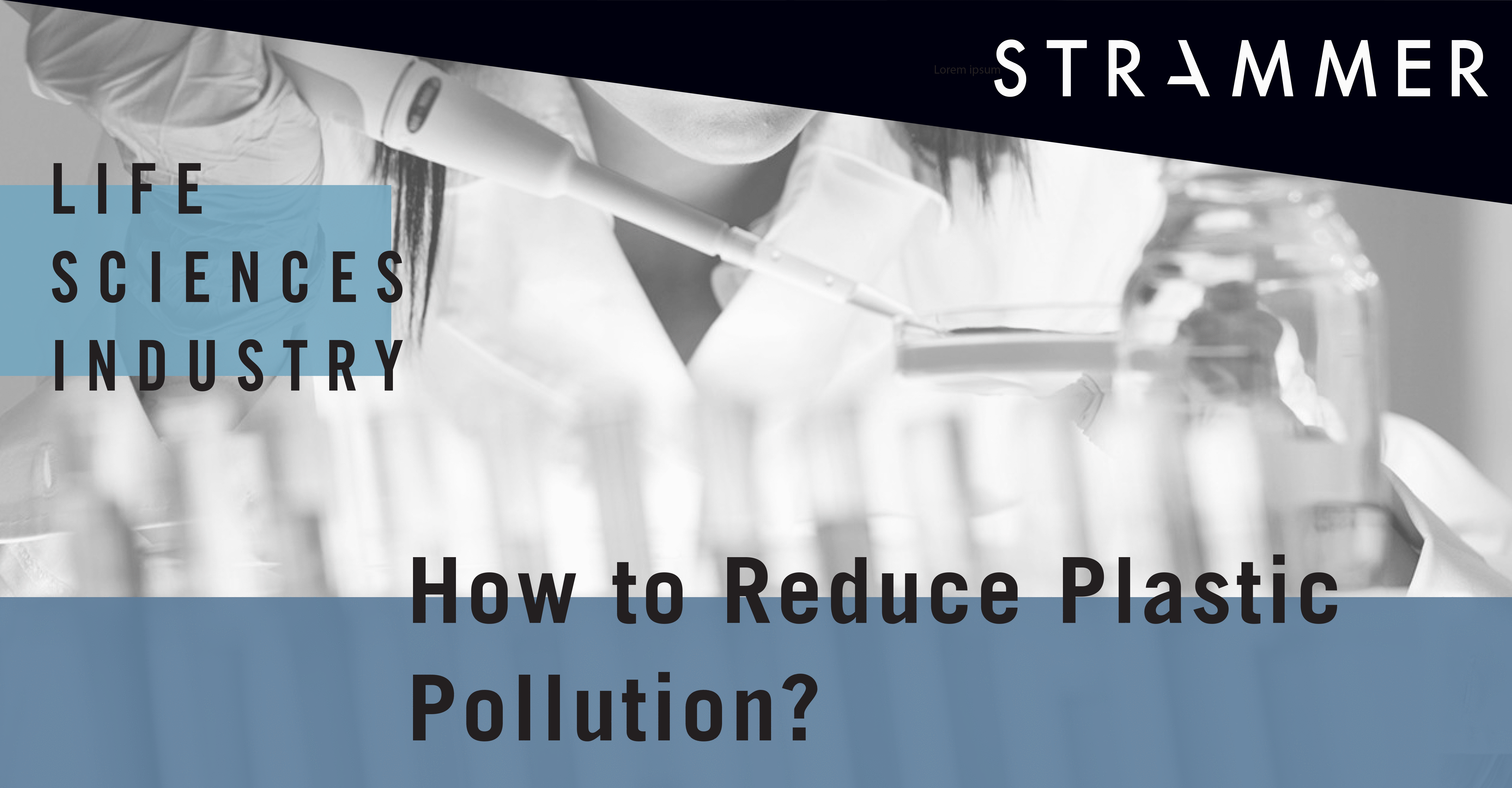Plastic In the Life Sciences Industry
We have all heard that plastic pollution is damaging our planet. But are we aware of the extent of the problem and its concrete effects? The main issue is that plastic is made from a material that never biodegrades. It just breaks into smaller pieces.
Research and studies show that plastic is found in all of us and all around us. There are many consequences for the environment, such as groundwaters pollution; ocean plastic pollution; animals eating plastic, thinking it is food. The latter is also harming humans because we end up eating these animals. However, the consequences for the human body do not end here: cancers, damages in the immune and reproductive systems, and many other health problems. Toxic chemicals from plastics get in contact through skin, inhalation or even ingestion.
A disturbing 2018 research from the World Health Organisation showed that 90% of the analysed bottles of water contained microplastics. Therefore, we are also ingesting plastic when we consume water. In fact, in many countries, plastic is burned in open air. So, when people breath they are inhaling these toxic chemicals.
We are extremely depending on plastic. It is multifunctional, more persistent, cheaper and lighter than other materials. It is used in all areas, including the Life Sciences Industry. For instance, about 5.5 million tons of plastic is produced annually in the Life Sciences laboratories. Plastics are used in 80% to 90% of medical-related things. And according to Practice Greenhealth, 25% of waste produced by hospitals is plastic.
Thus, what exactly can the Life Sciences Industry do to tackle this issue? As a solution, the motto “Reduce, Reuse and Recycle” have been gaining relevance, and that is what some people defend that should be done on this industry, even if it looks demanding. It would involve reprocessing laboratory/medical equipment and even ban singles use plastics.
In fact, banning single-use products is crucial as they represent 50% of plastic. Choosing metal or glass goods is more environmentally friendly, even when compared to biodegradable ones.
On the other hand, many defend that this industry should redesign their products, so they do not require as much plastic. As an example, Starlab Company is working towards this goal and was able to produce “TipOne® pipette tip system”, with recyclable and reusable components.
In addition, it is crucial to find alternative solutions to plastic. One that is gaining attention is bio-plastic – biodegradable plastic made from natural substances. The disadvantage of this material is that it has a specific disposal process and, if mistakenly introduced in the traditional recycling process, it can contaminate it.
Research from McGill University also found that lobster shells and other shellfishes can be used to produce a non-toxic, biodegradable plastic-like material. Although there must be more research and discovery on the subject, this clearly shows that there are viable alternatives.
In 2018, scientists from Britain and the US developed an enzyme that eats plastic and degrades it more effectively. The goal is to produce this enzyme on an industrial level. In the video you can learn more about this.
The European Union wants to ban single-use plastic products and make plastic producers pay for its waste management. This can cost companies around €3 billion. However, it would create 30.000 jobs and prevent €22 billion in environmental damage.
The future is looking brighter. As we have seen, companies and organisations are starting to acknowledge this problem and take measures to resolve it.
References:
- Tackling Waste: 5 Steps to Less Plastic Waste in the Lab, July, 2019, LAB Worldwide
- Novalis LifeSciences raises $85m for its first fund and will invest in life science industry, including synthetic biology companies, August 2019, BIO MARKET INSIGHTS
- How to Eliminate Plastic Waste and Plastic Pollution with Science and Engineering, August 2018, INTERESTING ENGINEERING
- The paradox of plastic in healthcare, December 2018, Medium
- Lobster Plastic – The New Material in The Medical Industry, February 2019, SWEDBRAND GROUP





